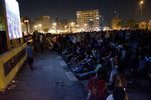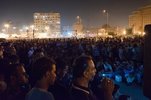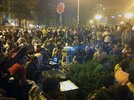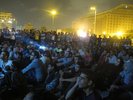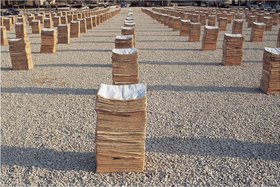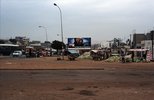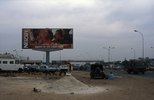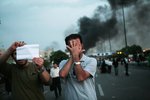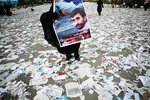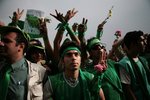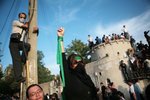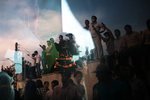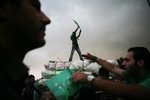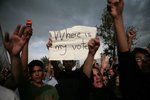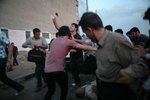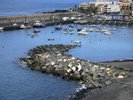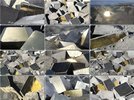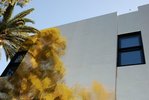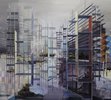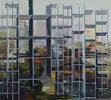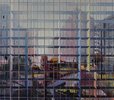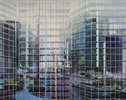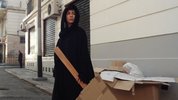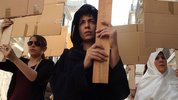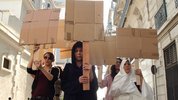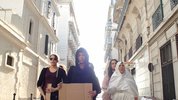Platform for discussion 002
What relationship does visual culture have to the world we live in?
Essays
-
Go Down, Moses: Tourism, Space and Ideology.1 November 2011
Reflections from a book on South Sinai
Ahmad Hosni
-
How I became a politician, or,
How theft turned me into an artist1 November 2011Yazan Khalili
Interviews
-
Active Interventions/ Intervening Actions5 April 2012
Jasmina Metwaly in conversation with Angela Harutyunyan
Angela Harutyunyan
-
Suspended Lives and Emerging Voices5 December 2011
Nadia Kaabi-Linke in conversation with Lina Lazaar
Lina Lazaar
-
Restaging the (Objective) Violence of Images1 November 2011
Reza Aramesh in conversation with Anthony Downey
Anthony Downey
-
Resounding Images and Distances1 November 2011
Ismaïl Bahri in conversation with Silke Schmickl
Silke Schmickl
-
New Vocabularies for New Challenges1 November 2011
Newsha Tavakolian in conversation with Sara Raza
Sara Raza
Responses
During the July sit-in in Tahrir Square in Cairo, the site of the revolution at the beginning of the year, a group of artists and filmmakers lit up a corner of the square with an open-source 'revolutionary' screen: Tahrir Cinema . Every night, a filmmaker, journalist or activist presented a...
In the world we live in, where public spaces are meagre, artists create visual ideas where the onlooker becomes an active citizen. Installation artist Nada Sehnaoui deals with collective memory and identity, communicated in unused large public areas in Beirut, Lebanon (Fractions of Memory, Martyrs’ Square, 2003).
Critique of Middle Eastern art often demands that the relationship between visual culture and our world be overtly socio-political to be relevant.
There is no denying that visual culture is a powerful outlet for peaceful protest. And there is certainly merit in preserving ethnicity and providing an authentic representation of the region and its cultural richness. Nevertheless, artists whose statements veer away from the social and political should not be overlooked.
As far as I can see, there is little room for blind people and too much space for those who don’t listen.
Visual culture in a country like Morocco does not differ from its counterparts in the rest of those countries that remain, to some extent, beneath a foreign-made umbrella.
The production of the image in the post-colonial age compels us strongly to undergo subordination to foreign ideologies, because this is a production that does not heed the inner necessity of our societies. It is much more concerned with meeting other conditions, set outside the domain of our fabricated borders, through very shrewd policies.
It is so difficult to imagine the people in the world now getting their cultural resources without a visual component, especially in the Arab world where the photograph is becoming increasingly dominant in the media. For example, most newspapers and Arabic magazines are giving much more space to photographs, considering them as important as the written reports. Unfortunately this produces less analysis from the media in general. On the other hand, the various satellite TV channels, with their constant dissemination of imagery, are today a tool to inform and influence a large segment of the Arab people, namely illiterates.
The scale of the resistance among the people of the MENA region in the last year will remain an example in contemporary history. This resistance expresses a desire to build new ground and another social entity, which up till now has been latent. The clear desire is to build a...
Nowadays, visual culture is considered to be a vehicle for the constant delivering of messages of identity to the public. The image has become the universal means of recalling to an audience the history of how we speak; how we think; and how we envision the future.
Until a few years ago, the Arab world wasn’t considered a reliable and sustainable place for art and culture but just recently a series of geopolitical and cultural circumstances have triggered a new beginning.
By bicycle, he travels the roads and the districts searching for an answer to his many questions. He is a man, Tunisian, Arab, Berber and a native with roots in the Maghreb, Africa, the Middle East ... He is of this Earth and these oceans.
Cardboards are leaned against a wall in a street. They form a peculiar assemblage one can identify as makeshift shelters. Fashioned out of the detritus of consumer society, the cardboards have become facades. They conceal women who were probably repudiated by their families. One of them emerges from her 'house'...
This is a very wide question and impossible to answer in a book, let alone a paragraph. However, it could boil down to two questions concerning visual artists, rather than visual culture per se: What can art do? And do artists have a responsibility to react and respond to their contexts?
Middle Eastern culture, which is Islamic and mainly very conservative, is in the process of redefining its interpretation of, and relationship to, visual culture. The role of contemporary art in the Middle East is different to that in many parts of world. Design, advertising, media, performance, photography, conceptual art, new media, film and computer technologies all have a critical role to play in addressing social, educational and political issues. However, the platform for expression is very narrow for artists and art critics in many countries across the Middle East and North Africa. Secondly, certain aspects of global contemporary visual culture expressed through the arts present very new concepts for Middle Eastern societies. Within such a cultural context, artists need to be abreast of what can and cannot be shown in public. Yet in spite of these difficulties and the necessity at times to circumvent these constraints, some interesting projects have taken place. It is even possible that with the recent uprisings in the Middle East and North Africa, the situation may yet change.
What is a platform?
A platform is a space for speaking in public. It is an opportunity to express ideas and thoughts. It also suggests the formal declaration of a stance or position on any given subject.
Unique to Ibraaz is a 'platform', a question put to writers, thinkers and artists about an issue relevant to the MENA region. This platform is sent to respondents both within and beyond the MENA region and contributions will be archived every 12 months.
























